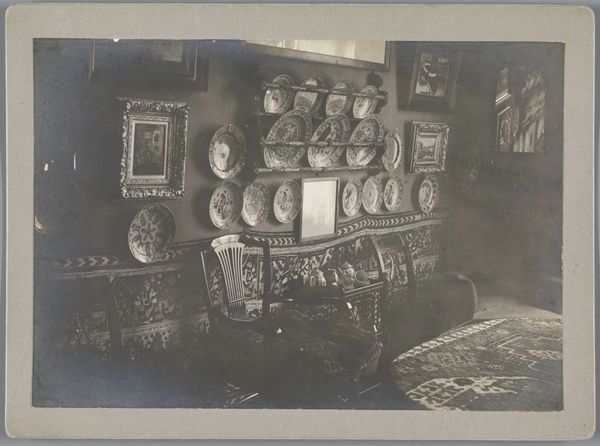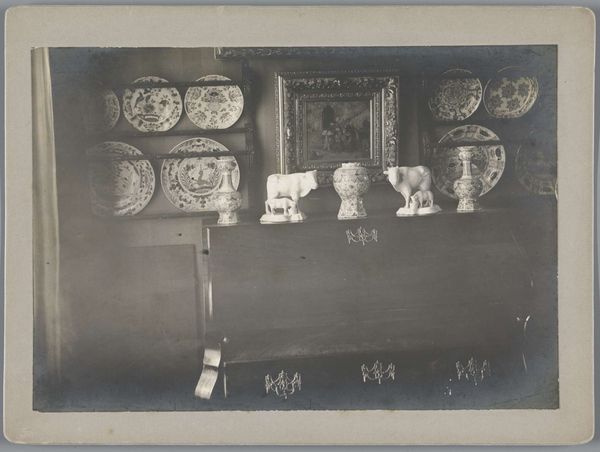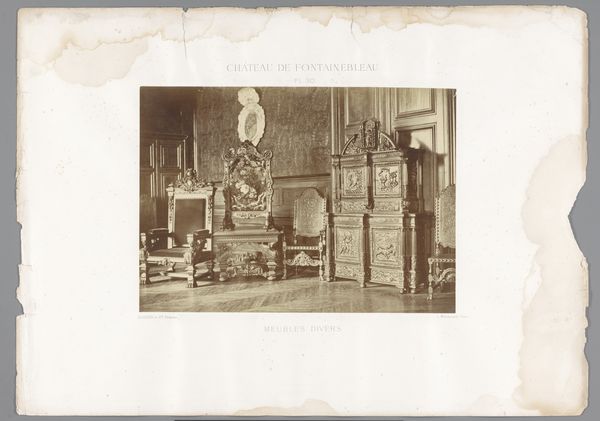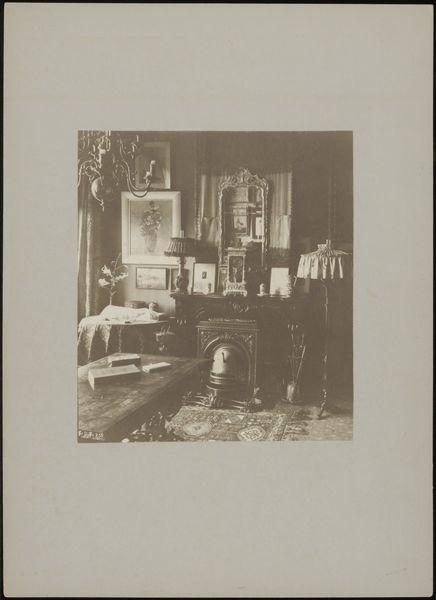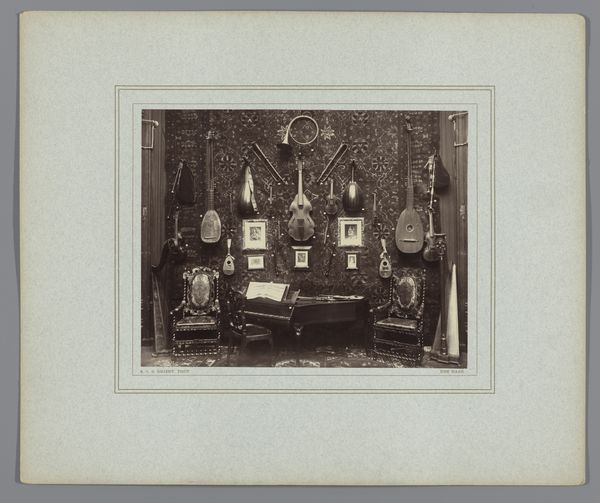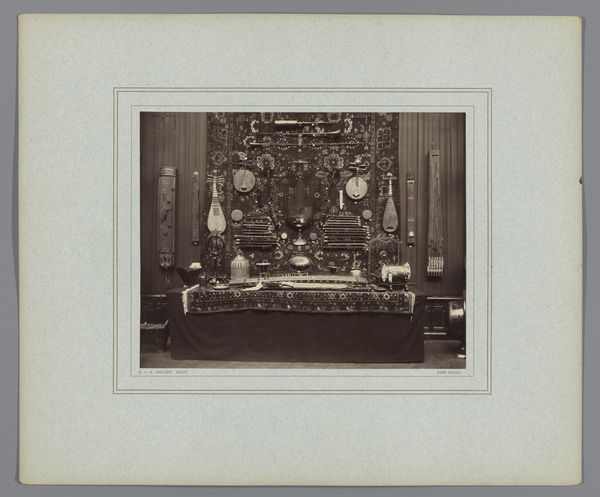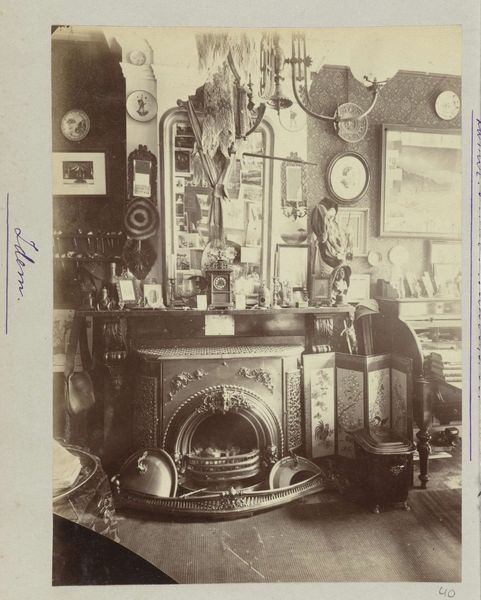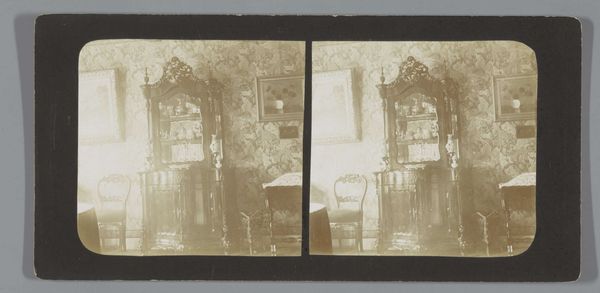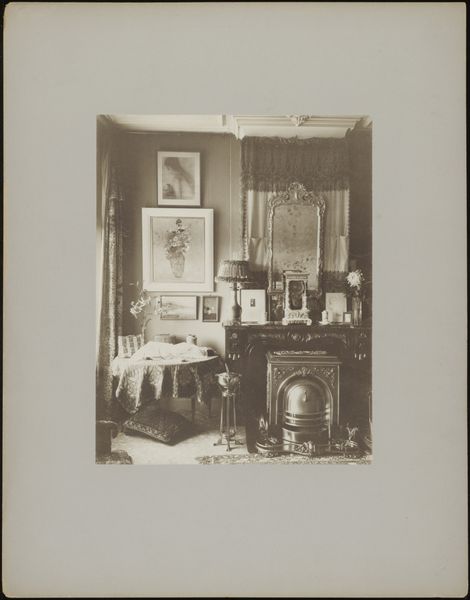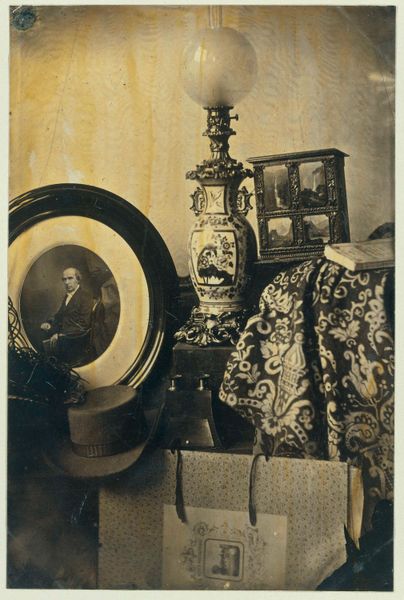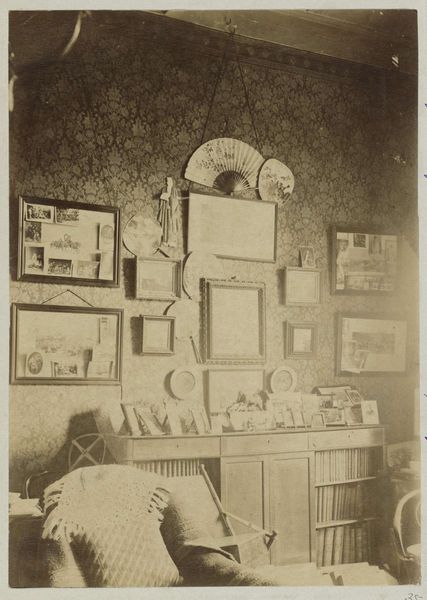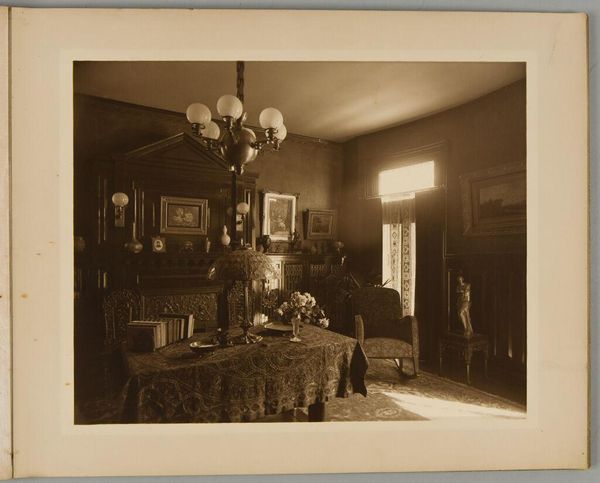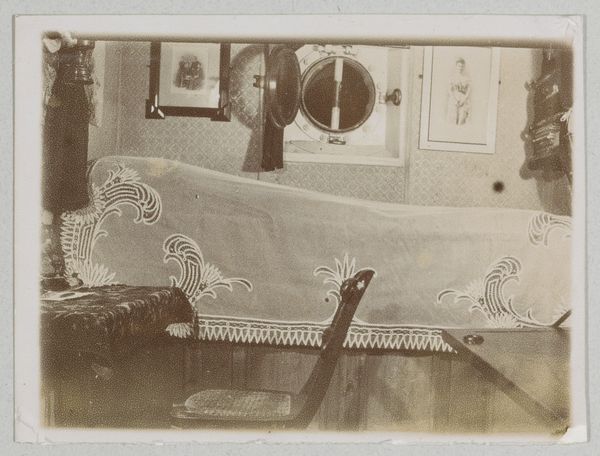
photography, gelatin-silver-print
#
toned paper
#
photography
#
intimism
#
gelatin-silver-print
Dimensions: height 118 mm, width 166 mm, height 138 mm, width 187 mm
Copyright: Rijks Museum: Open Domain
Editor: Willem Witsen’s "Interieur Witsen," a gelatin-silver print from around 1860 to 1915, now at the Rijksmuseum, depicts a domestic scene filled with patterned plates and various objects. There is something intriguing about the image, it feels so meticulously staged and curated. How do you interpret this work? Curator: It is indeed a fascinating piece. Beyond the still life aspect, consider the period and its fixation on domesticity, gender, and the performative nature of display. Photography during Witsen's time was shifting how we document our worlds. Do you think the arrangement here celebrates personal identity and status through these chosen objects? Editor: Absolutely. The plates, the statuettes... they almost scream a need for display, but I wonder how conscious Witsen was of the social implications. Is this intended to impress, or simply capture an aesthetic? Curator: Perhaps both? These were transitional times; thinking about the labor of maintaining a space like this for women opens other insights, the power dynamics implied, and then think of the "male gaze" observing or judging, as male contemporaries would enter the Witsen home... What does photography allow Witsen to reveal or conceal about that gendered experience? Editor: That adds a whole other dimension. I hadn't considered how the objects are meant to represent people within social constructs. Curator: Precisely! It speaks to identity and self-representation within societal norms, as they transition across an historical arc of modernity. These images function as both document and a staging of reality itself. How can a viewer respond to those contradictions? Editor: I see this piece in a completely different light now. Thanks for helping me explore these layers. Curator: Likewise. Recognizing these nuances pushes our reading beyond mere aesthetics to reveal rich and essential conversations.
Comments
No comments
Be the first to comment and join the conversation on the ultimate creative platform.

